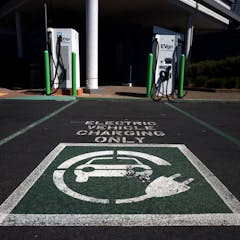
Articles on Rural America
Displaying 1 - 20 of 50 articles

Rural white people have long held disproportionate power in US politics. But polls suggest their commitments to the American political system are eroding.

It’s part of a decadeslong trend.

With more than 2 million migrant workers finding food processing jobs in rural America, their struggle to find adequate health care remains elusive.

The Pulitzer Prize-winning author is just one of many artists from Appalachia who are probing the crisis in their work, while taking pains to ensure that it doesn’t define the region and its people.

Even if you don’t live near farm country, you’ve got a stake in the upcoming farm bill – including what kind of farms your tax dollars support.

Corporations restrict what farmers can do with their own seeds, as well as their farm equipment when it breaks down.

If the EV transition focuses exclusively on drivers in privately owned cars, it won’t meet many Americans’ mobility needs, particularly in underserved communities.

The rising cost of living doesn’t hit all Americans equally. Yet the benchmark figure for charting the rising cost of living excludes people in rural areas.

Young queer people growing up in rural areas don’t necessarily need to flee their communities to find safety and acceptance.

While many students who grew up in rural communities leave for good after going off to college, some are returning to their rural roots. A scholar who studies education and small towns explains why.

Farmers can help slow climate change by mixing native grasses into croplands, restoring wetlands and raising perennial crops. These strategies also conserve soil and water and build new markets.

A federal proposal could effectively reclassify the homes of millions of Americans as rural, not urban – without anything actually changing about their communities.

Stereotypically, gay, queer and trans kids flee small towns to find acceptance in big, diverse cities like New York or Chicago. But evidence shows many will eventually return to rural areas.

Americans depend more than ever on high-speed internet to connect to jobs, get health care and socialize. What policies really work to close the rural-urban digital divide?

The Postal Service plays a critical role in the supply chains of small businesses and in keeping rural America connected. There’s no reason it can’t continue to do so despite its financial woes.

Local leaders and business owners have had to get creative to help their residents stay healthy and keep community economies going.

African Americans, young children and rural Americans are a few of the groups at risk of being undercounted in this year’s census.

Southern governors are starting to reopen their economies at the same time COVID-19 cases are spreading through the rural South.

Rural America has special problems as it copes with the COVID-19 pandemic.

Rural African American families typically have more disadvantages than those living in urban areas. But high-tech options can help.
